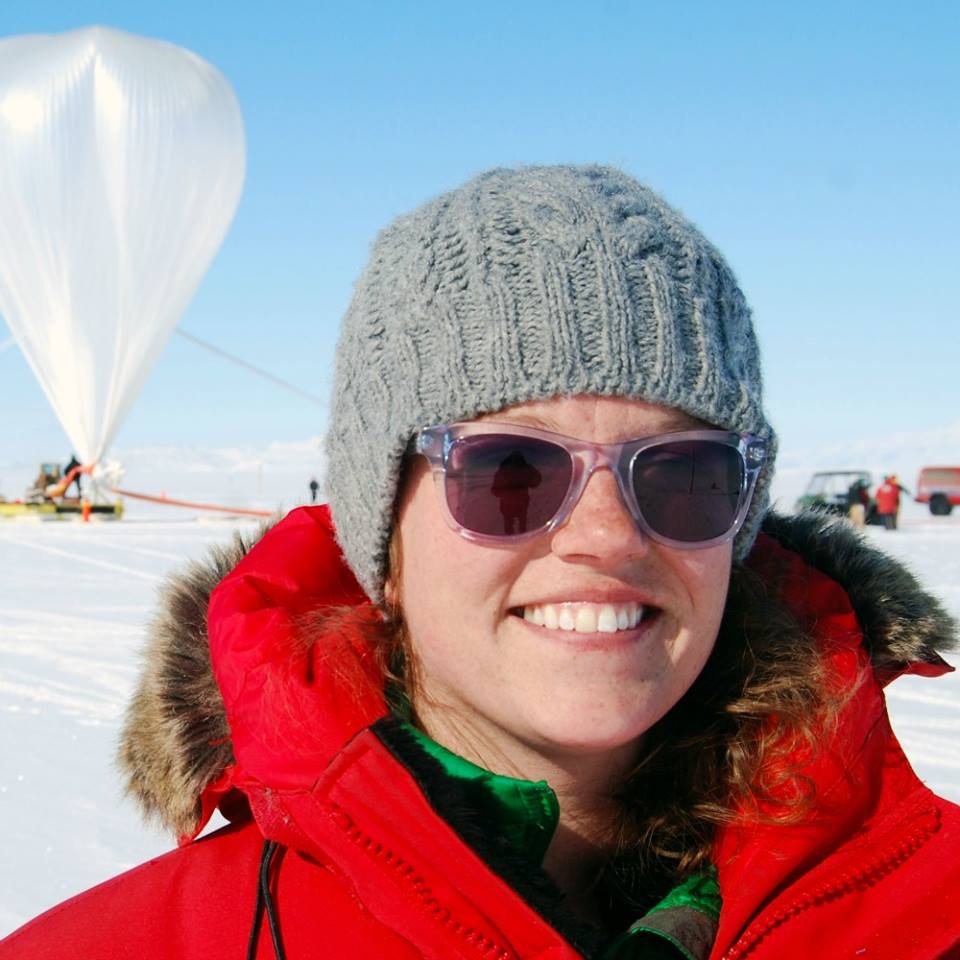Alumna visits campus to discuss NASA research
3 min read
University Relations
By JULIANE KIM
Katie Mulrey, an alumna of the University of Mary Washington, lectured recently on her graduate research conducted in Antarctica. The Society of Physics Students sponsored the presentation, which occurred on Wednesday, March 11.
Mulrey started off the first half of her lecture explaining the science behind her experiment. While in Antarctica, she worked on detecting high-energy particles that made it to Earth, particularly cosmic rays and neutrinos. High-energy particles come from space, sometimes from supernovae, and are so energized that they can move faster than light when travelling through a medium. They are also very uncommon, with high-energy neutrons sometimes appearing only once per kilometer every century.
Because high-energy particles are so rare, experiments with ANITA, or the Antarctic Impulsive Transient Antenna, are necessary to detect them. ANITA, the project that Mulrey worked on during her stay at the South Pole, utilizes the entire continent to help detect the high-energy particles.
Once high-energy particles hit the expansive ice on Antarctica, they produce radio waves due to something called the Askaryan effect. ANITA flies above Antarctica attached to a balloon and uses antennae to gather data of the radio waves being emitted from the continent’s surface. Each balloon costs about $1 million. Once a balloon is taken out it cannot be used again, so much of the time after ANITA was built was spent waiting for the perfect weather for deployment.
After sending ANITA into the atmosphere, the research team took 24-hour watches in shifts to monitor the data coming in. ANITA flew above Antarctica for a few weeks, and then was cut off from its balloon to stop it from going into the ocean.
The work area was seven miles away from McMurdo station, which is where Mulrey stayed for the duration of the experiment. Mulrey referred to the station as being a combination of an industrial mining town, college and a hippie commune in feel and function. Researchers lived in dormitories with roommates, went to coffee shops and bars on base and enjoyed communal game nights.
“I really liked the atmosphere. It was just a really chill place. Nobody locked their doors, and we had gingerbread house making competitions and dance parties and stuff like that so it was really a fun atmosphere to be in,” said Mulrey
Mulrey realized that she wanted to do physics when she took courses at UMW. Current science students here at UMW, like sophomore Alex Stoneburner, may be on track to similar aspirations.
Stoneburner was enthusiastic about how her own experiences correlated with Mulrey’s experiment in Antarctica.
“I spent last semester in New Zealand in Christchurch and did volunteering at the Antarctica center and heard a lot about the expeditions going on down there,” said Stoneburner. “It was cool to hear about an experience of someone who actually lived and worked through them. And, also to see how, as a science major myself, different things that we’re doing here at UMW can be applied to projects such as this.”
With UMW students and alumni alike so excited about physics, the future of science at UMW seems bright.


